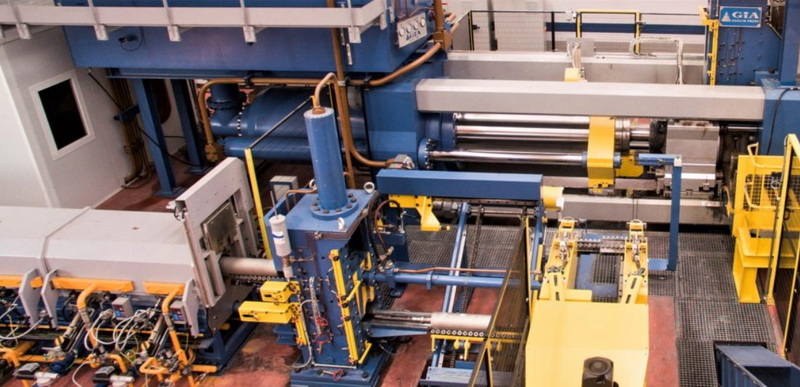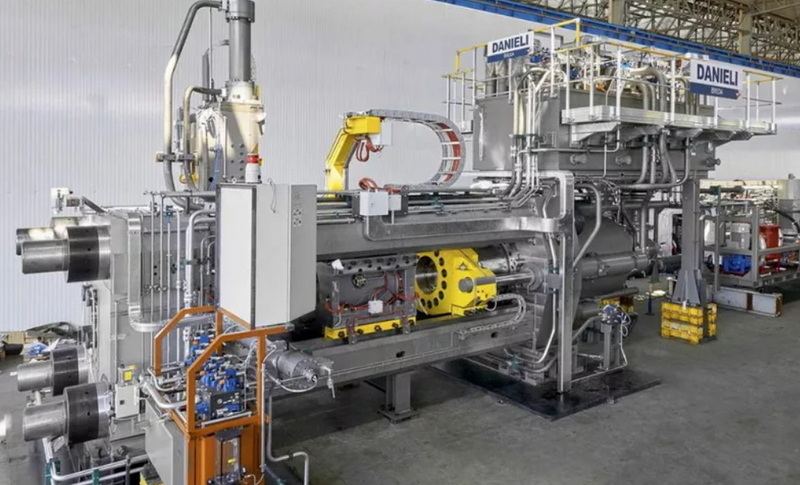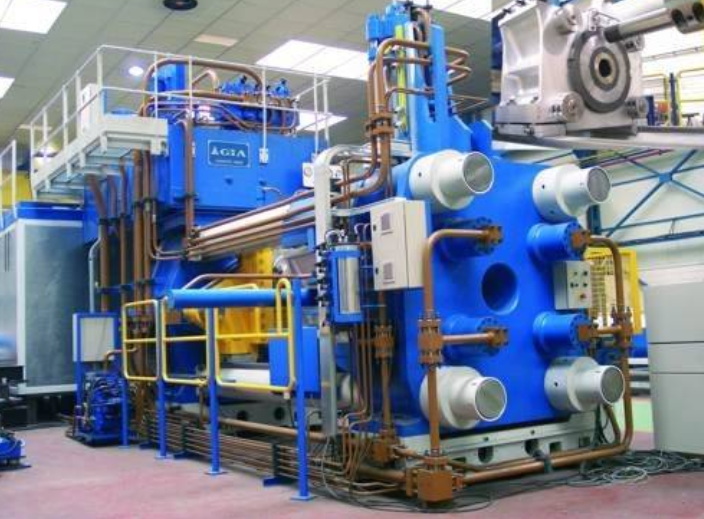Content Menu
● Understanding the Aluminum Extrusion Process
● Key Safety Measures for Aluminum Extrusion Press Operations
>> 1. Personal Protective Equipment (PPE)
>> 2. Machine Safety Features
>> 3. Comprehensive Training Programs
>> 4. Pre-Operational Checks and Maintenance
>> 5. Proper Material Handling Techniques
>> 6. Ventilation and Environmental Controls
>> 7. Fire Safety Measures
>> 8. Emergency Response Planning
>> 9. Housekeeping Practices
>> 10. Incident Reporting and Analysis
● Advanced Safety Technologies for Aluminum Extrusion Presses
● Ergonomic Considerations in Aluminum Extrusion Press Operations
● Creating a Culture of Safety
● Case Studies: Learning from Past Incidents
>> Case Study 1: The Importance of Proper Guarding
>> Case Study 2: The Role of Training in Preventing Injuries
● The Future of Safety in Aluminum Extrusion
● Conclusion
● Frequently Asked Questions (FAQ)
>> 1. What are the most common types of aluminum extrusion press injuries?
>> 2. How often should safety training be conducted for aluminum extrusion press operators?
>> 3. What role does personal protective equipment (PPE) play in preventing aluminum extrusion press injuries?
>> 4. How can ergonomic injuries be prevented in aluminum extrusion press operations?
>> 5. What should be included in an emergency response plan for an aluminum extrusion facility?
● Citations:
Aluminum extrusion is a vital process in manufacturing, but it comes with inherent risks. The processes involved in aluminum extrusion, particularly when using an Alco aluminum extrusion press, can pose significant safety risks. Therefore, implementing key safety measures is crucial to protect workers and ensure efficient operations.[1] This article will explore comprehensive strategies to prevent aluminum extrusion press injuries, ensuring a safer work environment for all involved.

Understanding the Aluminum Extrusion Process
Before delving into safety measures, it's essential to understand the aluminum extrusion process. The extrusion process can be compared to squeezing toothpaste from a tube. The continuous stream of toothpaste takes the shape of the round tip, just as an aluminum extrusion takes the shape of the die. By changing the tip or die, different extrusion profiles can be formed. If you were to flatten the opening of the toothpaste tube, a flat ribbon of toothpaste would emerge. With the aid of a powerful hydraulic press which can exert from 100 tons to 15,000 tons of pressure, aluminum can be extruded into just about any imaginable shape.[3]
The process generally follows these steps:
1. A die is cast from the cross-section of the desired shape.
2. Aluminum billets are heated in a furnace to approximately 750 to 925ºF, where aluminum becomes a soft solid.
3. Smut or lubricant is applied to the billet and ram to prevent sticking.
4. The billet is transferred to a steel extrusion press container.
5. The ram applies pressure, pushing the billet through the container and die.
6. The soft but solid metal is squeezed through the die opening and exits the press.
7. The process continues with new billets welded to previous ones.
8. When the formed profile reaches the desired length, it's sheared off and cooled.
9. The cooled extrusion is straightened and work-hardened on a stretcher.
10. Extrusions are cut to desired lengths.
11. The parts are either cooled at room temperature or moved into aging ovens for heat treatment.[3]
This complex process involves high temperatures, immense pressure, and heavy machinery, all of which contribute to potential injury risks.
Key Safety Measures for Aluminum Extrusion Press Operations
1. Personal Protective Equipment (PPE)
One of the most critical aspects of preventing aluminum extrusion press injuries is ensuring workers are equipped with appropriate Personal Protective Equipment (PPE). This includes:
- Safety glasses or goggles to protect against flying debris
- Cut-resistant gloves to prevent injuries from sharp edges
- Heat-resistant clothing to guard against burns from hot materials
- Steel-toed boots to protect feet from heavy objects
- Hearing protection in high-noise environments[1]
2. Machine Safety Features
Implementing proper machine safety features is crucial in preventing aluminum extrusion press injuries. These include:
- Guarding: Ensure that all moving parts of the extrusion press are properly guarded to prevent accidental contact.
- Emergency Stops: Install easily accessible emergency stop buttons that can quickly halt operations in case of an emergency.
- Lockout/Tagout Procedures: Implement lockout/tagout procedures during maintenance or repair work to prevent accidental machine start-up.[1]
3. Comprehensive Training Programs
To minimize the risk of aluminum extrusion press injuries, comprehensive training programs must be established for all operators and maintenance personnel. Training should cover:
- Safe operating procedures for the extrusion press
- Emergency response protocols
- Proper handling and storage of materials
- Recognition of potential hazards[1]
4. Pre-Operational Checks and Maintenance
Regular pre-operational checks and maintenance are essential in preventing aluminum extrusion press injuries. Before starting operations, conduct thorough inspections of the press, checking for:
- Proper alignment and functionality of components
- Adequate lubrication of moving parts
- Absence of foreign objects in the machine area[1]
Schedule routine maintenance checks on the extrusion press to ensure it operates safely and efficiently. Regular inspections can help identify potential issues before they lead to accidents.[1]
5. Proper Material Handling Techniques
Use proper lifting techniques and mechanical aids when handling heavy billets or extrusions to avoid strains and injuries.[1] This is crucial in preventing musculoskeletal injuries, which are common in industrial settings.
6. Ventilation and Environmental Controls
Ensure adequate ventilation in the workspace to dissipate heat and fumes generated during the extrusion process. This is particularly important when working with lubricants or cutting fluids that may release harmful vapors.[1] Proper ventilation not only prevents respiratory issues but also helps maintain a comfortable working temperature, reducing the risk of heat-related injuries.
7. Fire Safety Measures
Given that aluminum is combustible under certain conditions, implement fire safety protocols:
- Install fire extinguishers in accessible locations throughout the facility.
- Conduct regular fire drills to ensure all employees are familiar with evacuation procedures.
- Maintain clear access routes to exits and emergency equipment.[1]
8. Emergency Response Planning
Develop a comprehensive emergency response plan that includes:
- Procedures for dealing with injuries or accidents
- Contact information for emergency services
- Designated assembly points for evacuations[1]
Having a well-thought-out emergency response plan can significantly reduce the severity of injuries if an accident does occur.
9. Housekeeping Practices
Maintain a clean and organized work environment to reduce hazards such as slips, trips, and falls. Regularly remove debris, spills, or obstructions from walkways and work areas.[1] Good housekeeping practices not only prevent accidents but also contribute to a more efficient and productive work environment.
10. Incident Reporting and Analysis
Encourage a culture of safety by promoting the reporting of near misses or incidents without fear of reprisal. Analyzing these reports can help identify trends and improve safety measures.[1] This proactive approach to safety can help prevent future aluminum extrusion press injuries by addressing potential hazards before they lead to accidents.

Advanced Safety Technologies for Aluminum Extrusion Presses
As technology advances, new safety features are being developed to further prevent aluminum extrusion press injuries. Some of these include:
1. Automated Safety Interlocks: These systems automatically shut down the press if safety guards are removed or if an operator enters a danger zone.
2. Pressure Monitoring Systems: These systems continuously monitor hydraulic pressure and can detect anomalies that might indicate a potential failure or unsafe condition.
3. Thermal Imaging Cameras: These can be used to monitor the temperature of extrusion dies and billets, helping to prevent overheating and potential burn injuries.
4. Virtual Reality Training: VR technology can provide immersive, risk-free training experiences for operators, allowing them to practice handling dangerous situations without real-world consequences.
Ergonomic Considerations in Aluminum Extrusion Press Operations
Ergonomic injuries, while not as immediately dramatic as crush injuries or burns, can be just as debilitating over time. To prevent these types of aluminum extrusion press injuries, consider the following:
1. Workstation Design: Ensure that control panels and other frequently used equipment are positioned at comfortable heights and distances for operators.
2. Anti-Fatigue Mats: Provide cushioned standing surfaces for operators who must stand for long periods.
3. Job Rotation: Implement a system of job rotation to prevent repetitive strain injuries.
4. Ergonomic Tools: Use tools designed to minimize strain on the hands, wrists, and arms.
Creating a Culture of Safety
Preventing aluminum extrusion press injuries goes beyond implementing safety measures and providing proper equipment. It requires creating a culture of safety within the organization. Here are some strategies to achieve this:
1. Leadership Commitment: Safety initiatives should be visibly supported by top management.
2. Regular Safety Meetings: Hold frequent safety meetings to discuss potential hazards and reinforce safe practices.
3. Safety Incentives: Implement a program that rewards safe behavior and injury-free periods.
4. Continuous Education: Provide ongoing safety training and updates on new safety procedures or equipment.
5. Open Communication: Encourage employees to voice safety concerns without fear of reprisal.
Case Studies: Learning from Past Incidents
Analyzing past aluminum extrusion press injuries can provide valuable insights into prevention strategies. Here are two anonymized case studies:
Case Study 1: The Importance of Proper Guarding
In a medium-sized aluminum extrusion facility, an operator's hand was severely injured when it was caught in the moving parts of the press. Investigation revealed that a safety guard had been removed for maintenance and not properly replaced. This incident led to the implementation of strict lockout/tagout procedures and regular safety audits to ensure all guards are in place.
Case Study 2: The Role of Training in Preventing Injuries
A new employee at an aluminum extrusion plant suffered burns while handling hot extrusions. It was discovered that the employee had not received comprehensive safety training. This incident prompted the company to overhaul its training program, implementing a buddy system for new employees and regular refresher courses for all staff.
The Future of Safety in Aluminum Extrusion
As technology continues to advance, we can expect to see even more sophisticated safety measures in aluminum extrusion press operations. Some potential developments include:
1. AI-Powered Safety Systems: Artificial Intelligence could be used to predict potential safety issues before they occur, based on data from sensors throughout the extrusion press.
2. Wearable Safety Devices: Smart PPE could alert workers when they're entering danger zones or when environmental conditions become hazardous.
3. Augmented Reality Maintenance: AR could guide maintenance workers through complex procedures, reducing the risk of errors that could lead to injuries.
4. Robotics and Automation: Increased use of robots for dangerous tasks could significantly reduce human exposure to hazards.
Conclusion
Preventing aluminum extrusion press injuries requires a multi-faceted approach that combines proper equipment, comprehensive training, rigorous safety protocols, and a strong culture of safety. By implementing the strategies outlined in this article, companies can significantly reduce the risk of injuries in aluminum extrusion press operations.
Remember, safety is not a one-time effort but an ongoing process of improvement and vigilance. Regular reviews of safety procedures, staying updated on the latest safety technologies, and maintaining open communication with workers are all crucial elements in creating a safer work environment.
By prioritizing safety, companies not only protect their most valuable asset - their employees - but also improve productivity, reduce downtime, and enhance their reputation in the industry. In the end, a commitment to preventing aluminum extrusion press injuries is not just a moral imperative, but also a sound business decision.

Frequently Asked Questions (FAQ)
1. What are the most common types of aluminum extrusion press injuries?
The most common types of aluminum extrusion press injuries include crush injuries from moving parts, burns from hot materials, cuts from sharp edges, and musculoskeletal injuries from improper lifting or repetitive motions. Less immediate but equally serious are long-term injuries from exposure to fumes or noise.
2. How often should safety training be conducted for aluminum extrusion press operators?
Safety training for aluminum extrusion press operators should be conducted initially upon hiring, with refresher courses at least annually. However, additional training should be provided whenever new equipment is introduced, procedures are changed, or after any significant safety incidents.
3. What role does personal protective equipment (PPE) play in preventing aluminum extrusion press injuries?
Personal protective equipment plays a crucial role in preventing aluminum extrusion press injuries. PPE such as safety glasses, heat-resistant gloves, steel-toed boots, and hearing protection can significantly reduce the risk and severity of injuries. However, it's important to remember that PPE is the last line of defense and should be used in conjunction with other safety measures.
4. How can ergonomic injuries be prevented in aluminum extrusion press operations?
Ergonomic injuries in aluminum extrusion press operations can be prevented through proper workstation design, the use of ergonomic tools, implementation of job rotation to reduce repetitive motions, and providing anti-fatigue mats for standing workers. Regular breaks and stretching exercises can also help prevent these types of injuries.
5. What should be included in an emergency response plan for an aluminum extrusion facility?
An emergency response plan for an aluminum extrusion facility should include clear procedures for various types of emergencies (fire, injury, equipment malfunction, etc.), evacuation routes and assembly points, contact information for emergency services, roles and responsibilities of key personnel during an emergency, and procedures for shutting down equipment safely. The plan should be regularly reviewed and practiced through drills.
Citations:
[1] https://www.yjing-extrusion.com/what-are-the-key-safety-measures-for-alco-aluminum-extrusion-press.html
[2] https://www.linkedin.com/pulse/precautions-aluminum-extrusion-machine-operators-when-operating-jrxoc
[3] https://www.hydro.com/profiles/aluminum-extrusion-process
[4] https://www.outashi.com/blog/safety-precautions-in-operating-aluminum-extrusion-machine-id35.html
[5] https://www.machine4aluminium.com/precautions-in-selection-of-aluminum-extrusion-machine/
[6] https://www.ccmfg.net/what-is-aluminum-extrusion/
[7] https://www.yjing-extrusion.com/how-to-ensure-employee-safety-in-aluminum-extrusion-press-operations.html
[8] https://webstore.ansi.org/preview-pages/AMT/preview_ANSI+B11.17-2004+(R2009).pdf






















